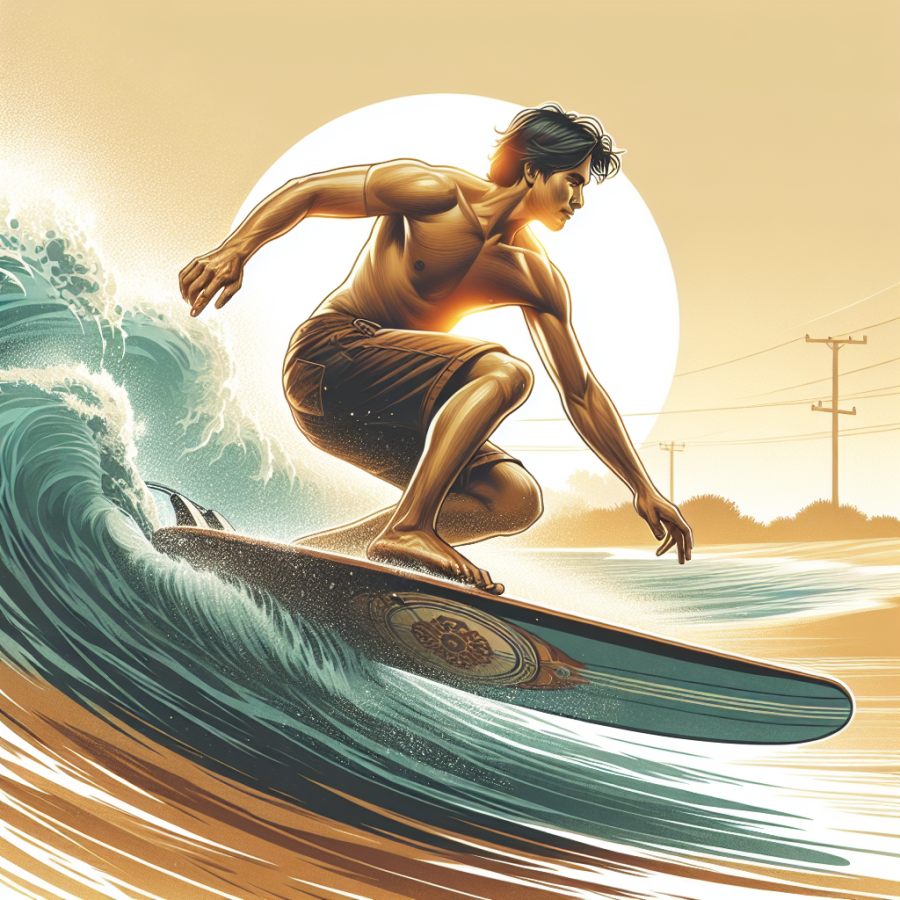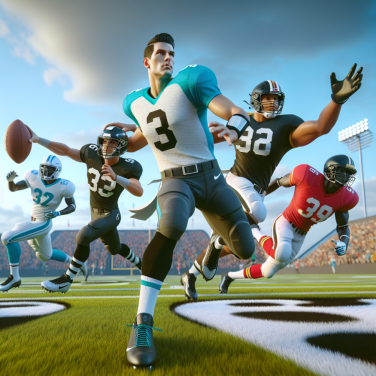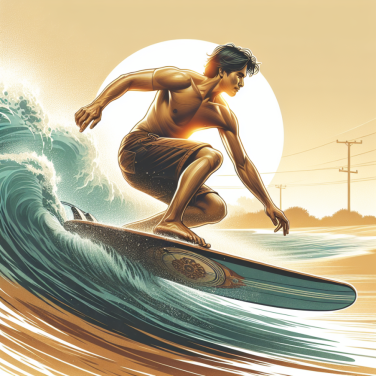Perfecting Your Skimboarding Technique: Tips for a Successful Ride
Improved Balance and Posture
One of the cornerstones of perfecting your skimboarding technique is ensuring your balance and posture are in top form. When you maintain a low center of gravity by bending your knees and keeping your back straight, you enhance your stability on the board. It's critical to keep your arms outstretched and your eyes fixed on the point where you want to go, as this will help guide your balance. Starting with dry land exercises that focus on core strength, such as planks and squats, can significantly improve your balance when transferring these skills to the skimboard.
Board Control and Maneuvering
Board control is a pivotal factor in a successful skimboarding ride. To steer the board, you need to shift your weight subtly in the direction you wish to move. Practice on flat ground before hitting the waves, getting comfortable with moving the board without it slipping out from under you. Quick, sharp movements are crucial for performing turns and tricks, so prioritize agility training and exercises that enhance your reflexes.
Perfecting the Drop
The moment you drop the board onto the thin film of water is critical in skimboarding. This technique, known as "the drop," can make or break your ride. A poorly executed drop can cause the board to stick or your feet to slip off, leading to a fall. To perfect this, practice by running alongside the water's edge and gradually increase your speed and the timing of your drop. Aim to release the board when it is flat and parallel to the surface, making sure to quickly get your feet on it without breaking momentum.
Approaching and Riding Waves
As you become more confident in your balance and board control, you can start to tackle waves. The key is to time your approach so that you meet the wave just as it's beginning to break. As you hit the wave, use your back foot to push down slightly and lift the front of the board, allowing you to glide onto the wave's face. Keep your knees bent and your body low to the board for control as you ride the wave. It's important to learn how to read the water and judge the best moment to make your move.
Developing Speed and Timing
Speed is essential for a successful skimboarding ride, as it helps you maintain momentum and ride waves more effectively. Focus on improving your sprinting abilities on the sand, as a fast run-up can significantly contribute to your speed on the board.
Read also:
Ascending Alone: The Ins and Outs of Rope Solo Climbing
Choosing Your Skimboard: A Comprehensive Guide to Materials and Shapes
When deciding on the perfect skimboard, two main factors come into play: the materials used and the shape of the board. Each plays a crucial role in how the skimboard performs on the water. Whether you’re sliding along the shorebreak or catching waves farther out, understanding these aspects will help you choose a board that is compatible with your skill level and riding style.
Materials:
Skimboards are commonly made from several different materials and the choice of which directly affects the board’s flexibility, durability, and weight.
1. Wood - Traditional skimboards are often made of wood, usually with a plywood core. Wood is a cost-effective option for beginners and offers a decent amount of floatation due to its thickness. However, wooden boards are heavier and less durable over time as they tend to absorb water and can warp or crack.
2. Foam - High-density foam core boards are covered with fiberglass or carbon fiber layers. These materials make for a lighter board that is easier to maneuver and offers better wave riding capabilities. Foam core boards are more buoyant, allowing for a smoother glide over water and the ability to tackle larger waves.
3. Fiberglass - Fiberglass skimboards offer a good balance between weight and durability. They are typically layered over a foam core, creating a board that can take more of a beating while still maintaining a light and responsive feel.
4. Carbon Fiber - Known for its strength and stiffness, carbon fiber is a premium material in skimboards. It allows for a thin, yet nearly indestructible board that can withstand the stress of wave impacts. The rigidity also translates to greater speed and sharper turns on the water.
Shapes:
The shape of a skimboard influences its stability, turn radius, and overall rideability. Understanding the variables in tail and nose design as well as the overall outline can help in selecting the most suitable board for your needs.
1. Pin Tail – Ideal for wave riding, boards with a pin tail design offer less resistance and greater control at high speeds, which is beneficial when taking sharp turns on waves.
2. Square Tail – Skimboards with a square tail have more surface area at the back, providing greater stability and lift, making them good for sand skimming and for beginners learning to balance.
3. Wider Nose – Boards with wider noses have more floatation and forward volume, which can help to catch and ride waves more effectively.
4.




